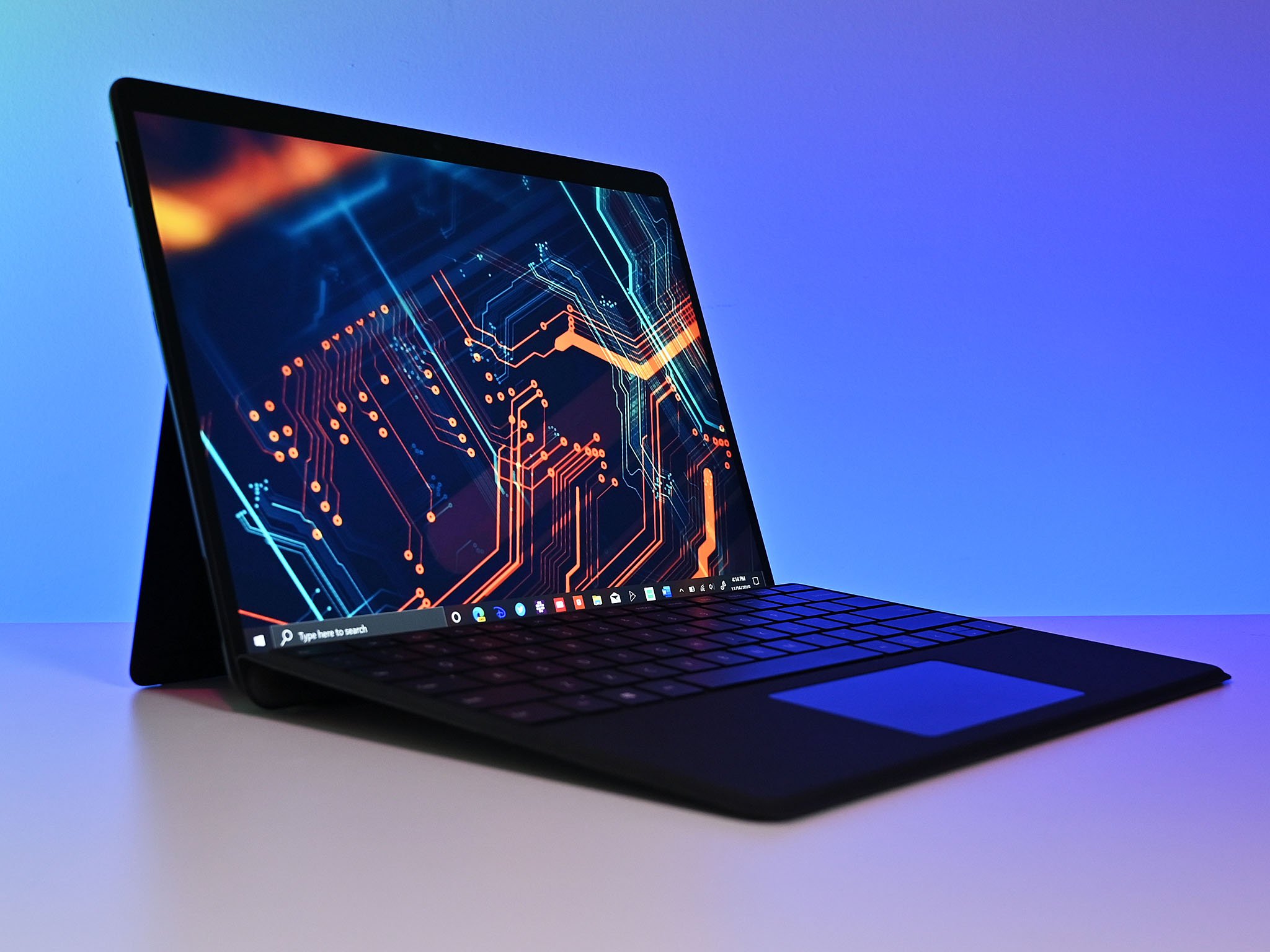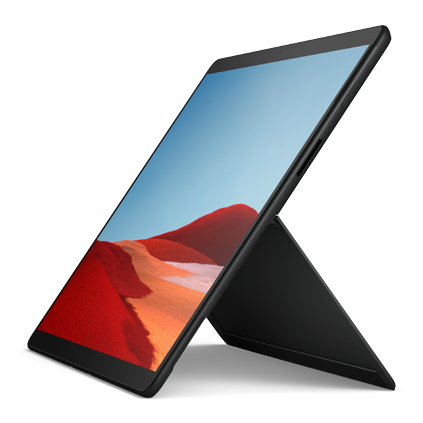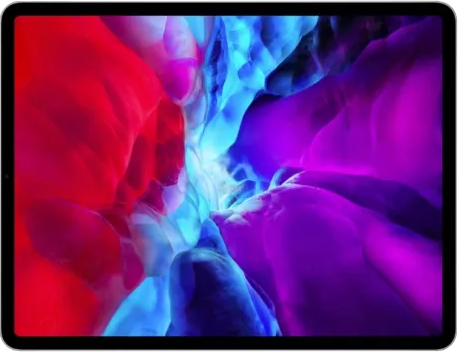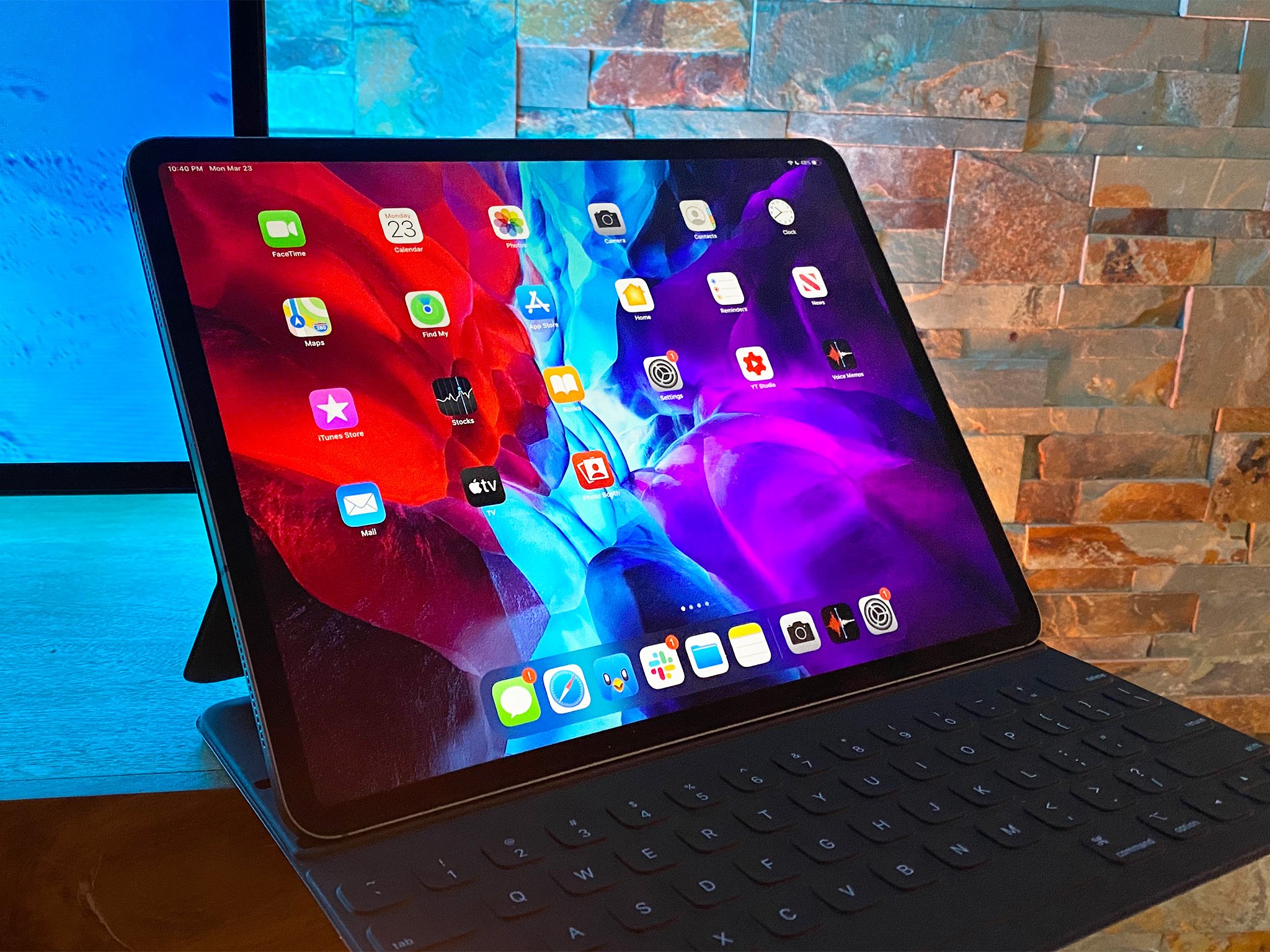

LTE-enabled Windows PC
The Surface Pro X is an ARM-powered Windows 10 2-in-1 that comes standard with LTE connectivity. It has a beautiful touch display, it has inking support, and its 2-in-1 form factor is the best to use. It doesn't have the same performance as the 12.9-inch iPad Pro, but you'll generally pay less for the Pro X.
For
- LTE comes standard
- Generally more affordable
- Can run software outside the app store
- Best 2-in-1 form factor
- All-day battery life
Against
- Wi-Fi 5
- ARM has some limitations

LTE-enabled iPadOS tablet
The 2020 12.9-inch iPad Pro comes with a beautiful touch display, compatible with a pen, keyboard, and touchpad. It comes with Wi-Fi 6 and optional LTE connectivity, and it delivers a solid performance. However, it only has one port, and iPadOS has some limitations if you're not already invested in the ecosystem.
For
- Gorgeous display
- Wi-Fi 6 and optional LTE
- Thinner and lighter build
- Pen and keyboard available
- Myriad apps and enticing ecosystem
Against
- Only one USB-C port
- iPadOS has limitations
- Generally costs more
Surface Pro X vs. Apple iPad Pro 12.9 tech specs
| Header Cell - Column 0 | Surface Pro X | Apple iPad Pro 12.9 |
|---|---|---|
| OS | Windows 10 | iPadOS |
| Processor | Microsoft SQ1Microsoft SQ2 | Apple A12Z Bionic |
| RAM | 8GB, 16GB, LPDDR4x | 6GB |
| Storage | 128GB, 256GB, 512GB | 128GB, 256GB, 512GB, 1TB |
| Display size | 13 inchesTouch | 12.9 inchesTouch |
| Display resolution | 2880x1920267 PPI | 2732x2048264 PPI |
| Graphics | SQ1 Adreno 685 | Apple A12Z |
| Ports | Two USB-CSurface ConnectNano-SIM | USB-CNano-SIM |
| LTE | Standard | Optional |
| Connectivity | Wi-Fi 5Bluetooth 5.0 | Wi-Fi 6Bluetooth 5.0 |
| Camera | Front-facing 5MPRear-facing 10MP | Front-facing 7MPRear-facing 12MP (Wide angle)Rear-facing 10MP (Ultra wide) |
| Biometrics | Facial recognition | Facial recognition |
| Keyboard | Optional | Optional |
| Pen | Optional | Optional |
| Battery | 38.2Wh | 36.7Wh |
| Dimensions | 11.3 x 8.2 x 0.28 inches(287mm x 208mm x 7.3mm) | 11.04 x 8.46 x 0.23 inches(280.6mm x 214.9mm x 5.9mm) |
| Weight | From 1.7 pounds(774g) | From 1.41 pounds(641g) |
| Color | Matte BlackPlatinum | SilverSpace Gray |
The user experience
Apple has moved its iPad Pro closer than ever to the Surface Pro lineup with a Magic Keyboard that includes multi-angle display and touchpad support. However, no matter how close the two devices are in terms of design, the operating systems still differ.
The Surface Pro X runs Windows 10 Home, an OS primarily designed for a standard PC experience. Microsoft has come a long way in terms of its operating system's tablet functionality, but it still doesn't stand up to what Apple has in iPadOS. Everything flows together extremely well on iPad, and if you primarily want a tablet experience, the iPad Pro is no doubt going to make more sense. The added option for a keyboard and touchpad for the iPad also helps bridge some of the gap that used to exist between the two devices.
The iPad Pro's A12Z custom CPU has eight cores and runs at 2.48GHz. Thanks to a mid-gen update for the Pro X it's now available with a custom SQ1 or SQ2 CPU. The difference? A minor performance bump that moves the base clock up to 3.15GHz from 3.0GHz in the SQ1.
Testing with synthetic benchmark Geekbench 5, the iPad Pro comes out on top with a 1,114 single-core score and 4,654 multi-core score. That's considerably higher than the Pro X's SQ1 725 single-core score and 2,819 multi-core score and SQ2 798 and 3,100 scores. The iPad Pro's integrated GPU also wins out here. If you want the snappiest performance, Apple's device is going to be the better option.
However, iPadOS strictly adheres to the Apple ecosystem. If you want an app, it must be available from the App Store, and there are some limitations in that sense. People already invested in the Apple ecosystem are no doubt already aware of some of iPadOS drawbacks, and that's not to say the Pro X doesn't also have some limitations due to its ARM64 processor (CPU).
Native ARM64 apps — including those recompiled for ARM64 and most UWP apps — net the best performance running on the Pro X, but you can also run older desktop (32-bit x86) apps in an emulation mode. The drawback here is a slight hit to performance. The Pro X cannot currently handle 64-bit x86 apps, though it's rumored that emulation support is coming sometime in 2020.
Bottom line? If you're in search of a device that feels more like a PC in the sense of freedom to do and run what you want, the Pro X is no doubt going to be a better choice. The Pro X is designed to comfortably work as a tablet or a laptop PC, and adding the hardware for the latter form is going to cost significantly less than similar hardware for the iPad Pro.
Get the Windows Central Newsletter
All the latest news, reviews, and guides for Windows and Xbox diehards.
Hardware and cost
One of the main selling points for the new iPad Pro is its Magic Keyboard with Trackpad hardware. Like the Surface Pro X's Type Cover, this addition adds a keyboard, touchpad, and angle adjustability, effectively turning the iPad Pro into a laptop when attached. That's a big deal for those who primarily use an iPad Pro for everyday work, but it comes at a steep cost.
Adding the Magic Keyboard to your 12.9-inch iPad Pro costs a about $349. Add that to the primary cost of the baseline iPad Pro, toss in an Apple Pencil, and you're looking at spending a minimum of $1,479. In comparison, a Surface Pro X Type Cover with Surface Slim Pen costs about $193, bringing the total cost of a baseline bundle up to about $1,193. That's a savings of about $300. And don't forget the Pro X comes with a built-in kickstand, allowing you to prop it up on a flat surface without any other attached hardware.
In terms of tablet hardware, both of these devices are true beauties. They're thin, they're light, and they're rocking gorgeous touch IPS displays. Pixels-per-inch is nearly the same, and both have support for inking, but the iPad Pro's 120Hz refresh rate, blistering 600-nit brightness, and vivid color edge out what the Pro X has to offer. The Pro X's display isn't a slouch, but it can't quite compete with the iPad Pro.
LTE connectivity is available in both devices, but you'll pay more for the feature in the iPad Pro as it doesn't come standard like in the Pro X. However, the iPad Pro does sport Wi-Fi 6 connectivity for blistering wireless speeds, while the Pro X is stuck on Wi-Fi 5.

The Pro X adds an additional USB-C port to the mix compared to the iPad Pro, and it also has Surface Connect for charging, leaving both ports open for other business. Neither device has a 3.5mm audio jack, meaning you'll have to make due with Bluetooth or a USB-C adapter.
Both devices offer biometrics in the form of facial recognition, adding some extra security. While both devices have standard front-facing cameras (5MP in the Pro X and 7MP in the iPad Pro), the iPad Pro has two rear-facing cameras compared to one on the Pro X. The iPad Pro also has a LiDAR scanner for light detection and ranging. If you're serious about taking photos with a tablet, the iPad Pro is probably going to make more sense.
Go with the Surface Pro X for a PC experience
Love Windows and want something closer to a standard PC experience with a tablet tossed in for good measure? The Surface Pro X, one of our picks for best Windows laptop, is no doubt a better pick. ARM has some limitations, but it should still give you more freedom than iPadOS. And it's going to cost less, especially when adding in accessories and LTE connectivity.

The thinnest Surface yet
Go with the Pro X if you love Windows and don't want to pay nearly as much for a 2-in-1 experience.
Choose the iPad Pro for a better tablet experience
The 12.9-inch iPad Pro is a formidable tablet with awesome performance, made better by the new Magic Keyboard and Trackpad. It's ideal for those already invested in Apple's ecosystem, though it will generally cost more than a Pro X, especially when you add in useful accessories.

Cale Hunt brings to Windows Central more than eight years of experience writing about laptops, PCs, accessories, games, and beyond. If it runs Windows or in some way complements the hardware, there’s a good chance he knows about it, has written about it, or is already busy testing it.
